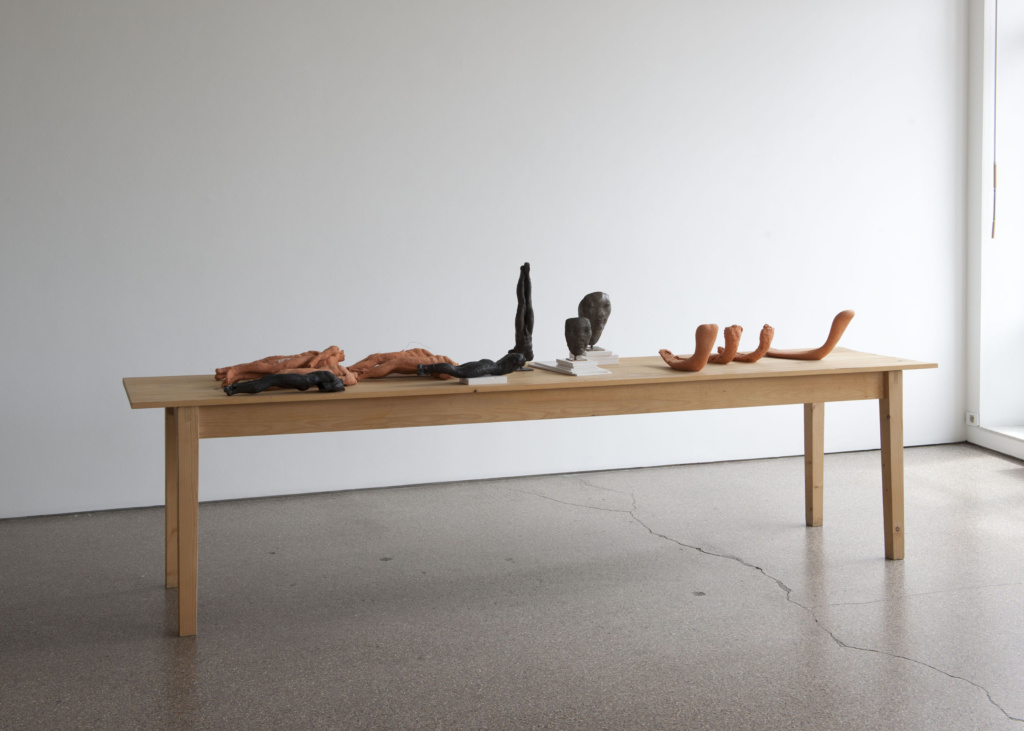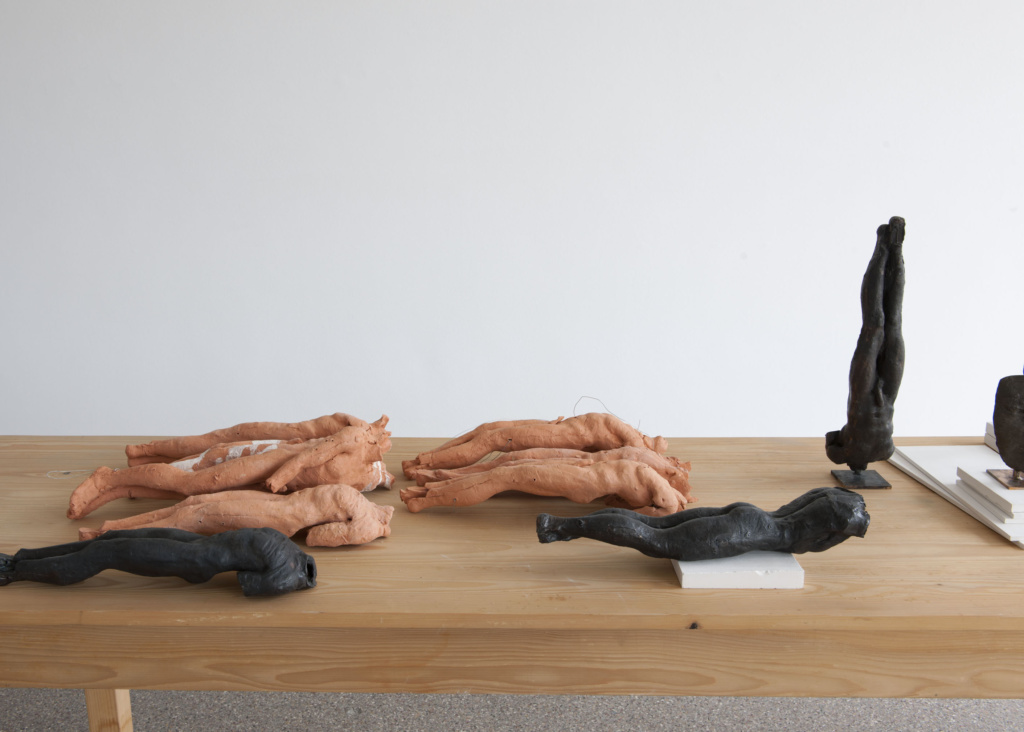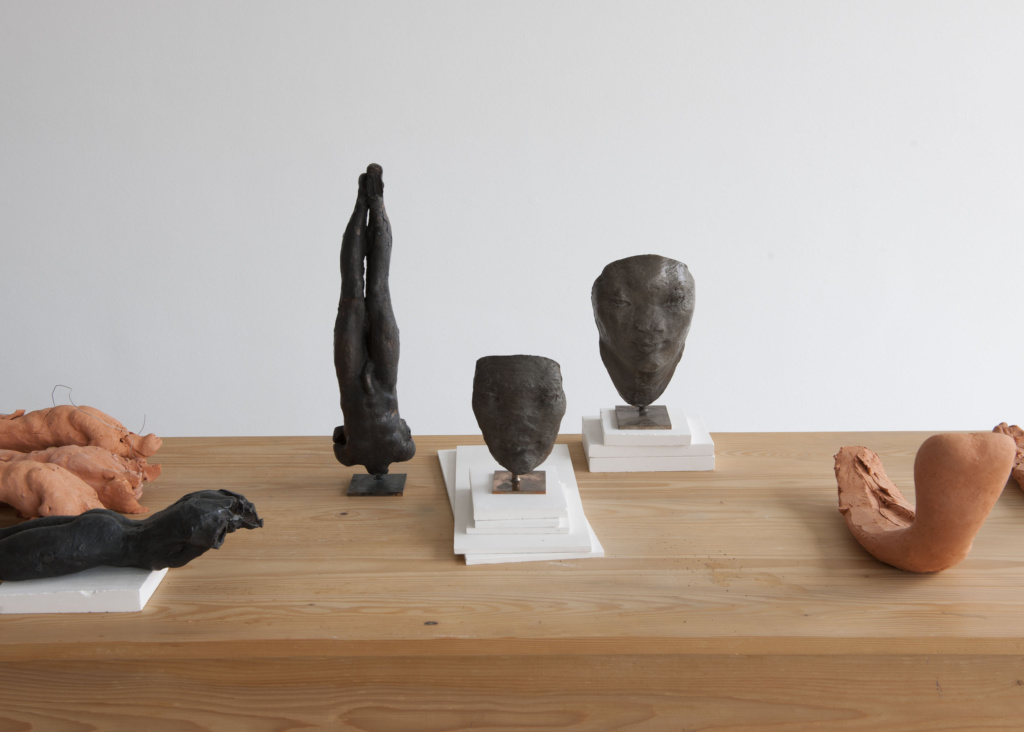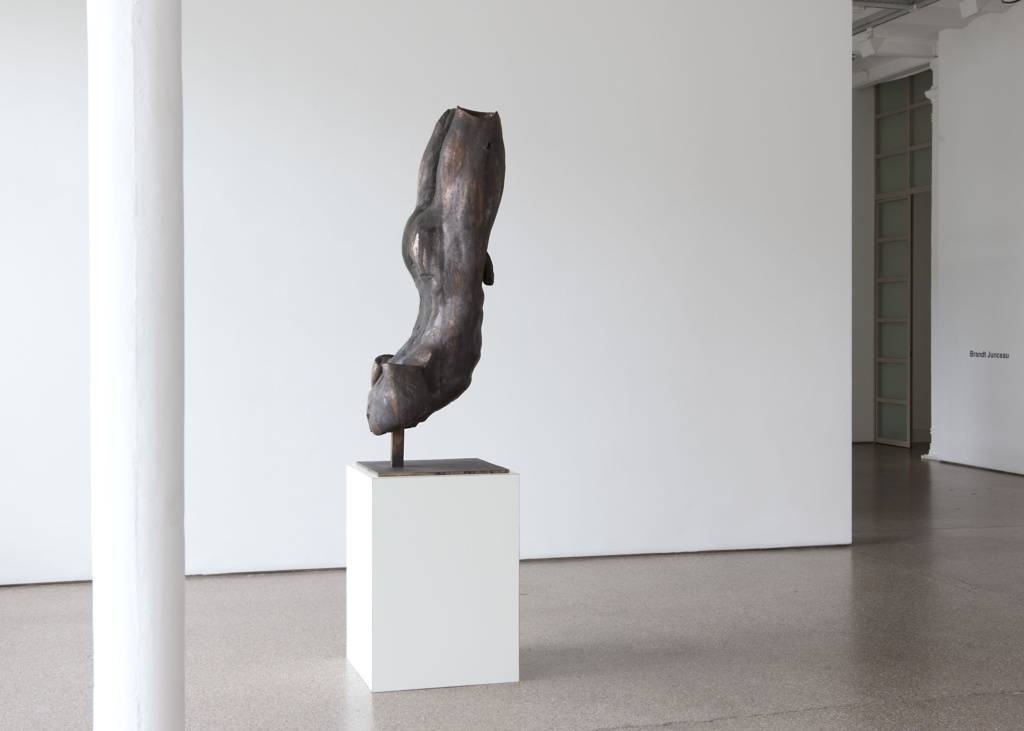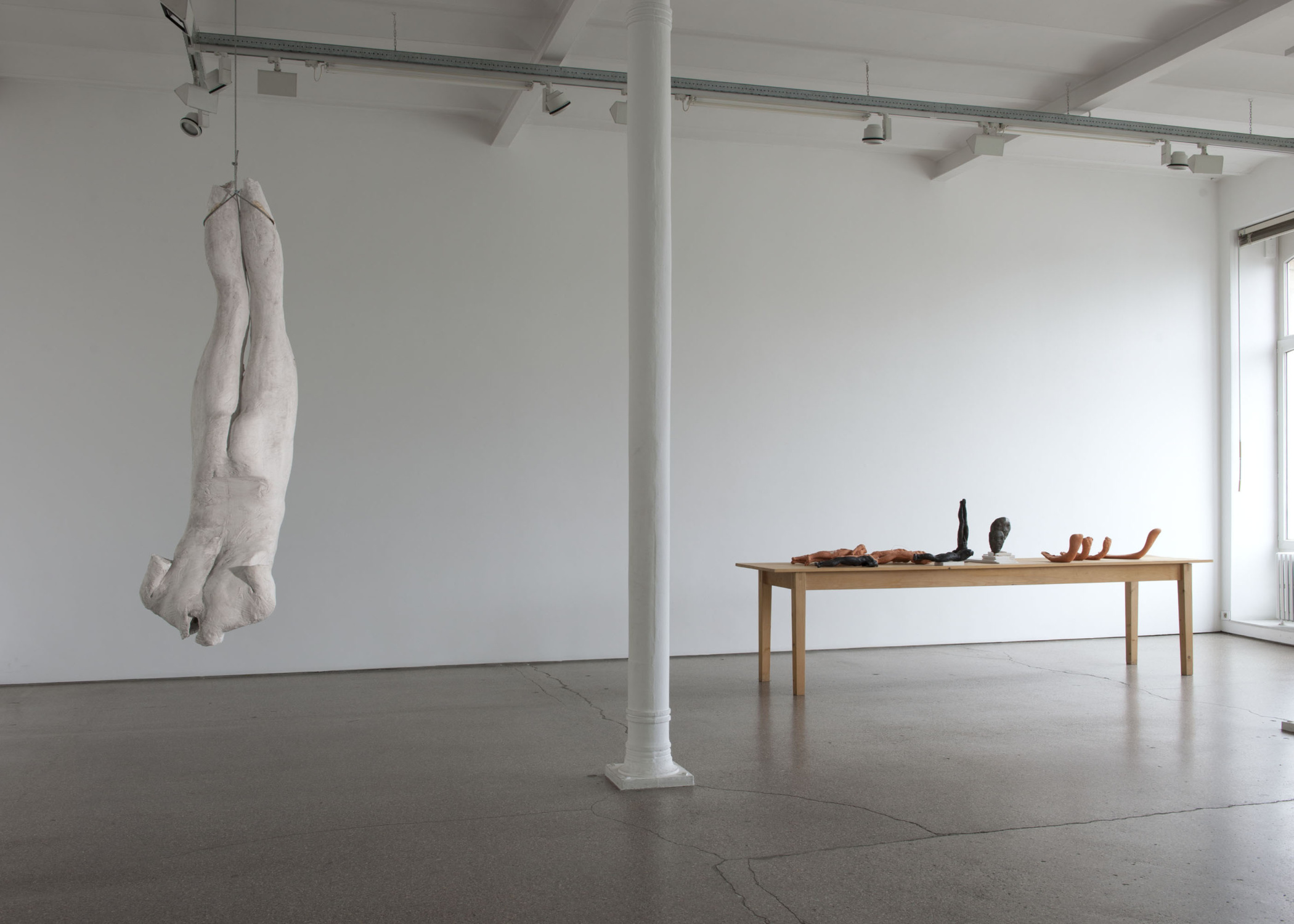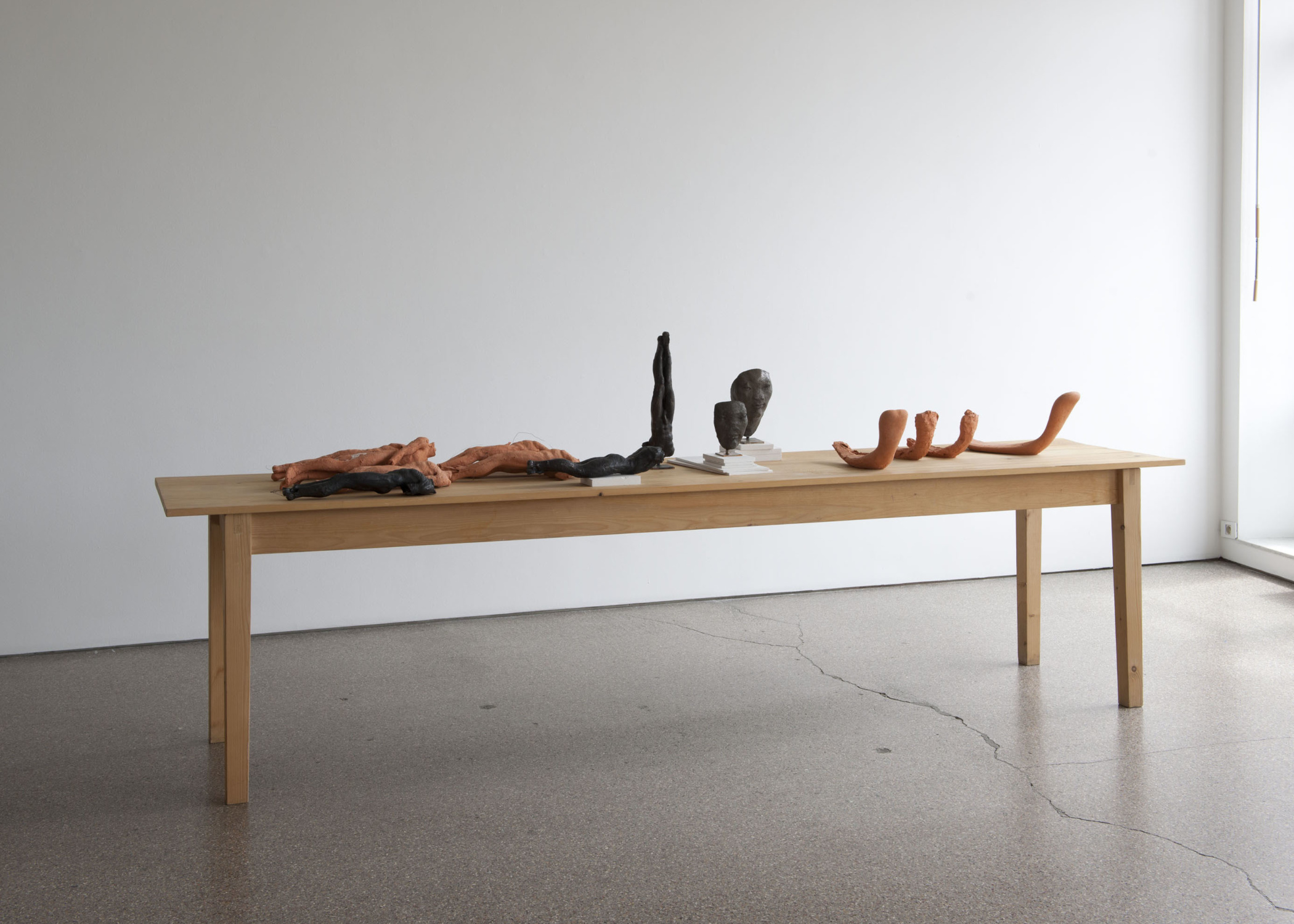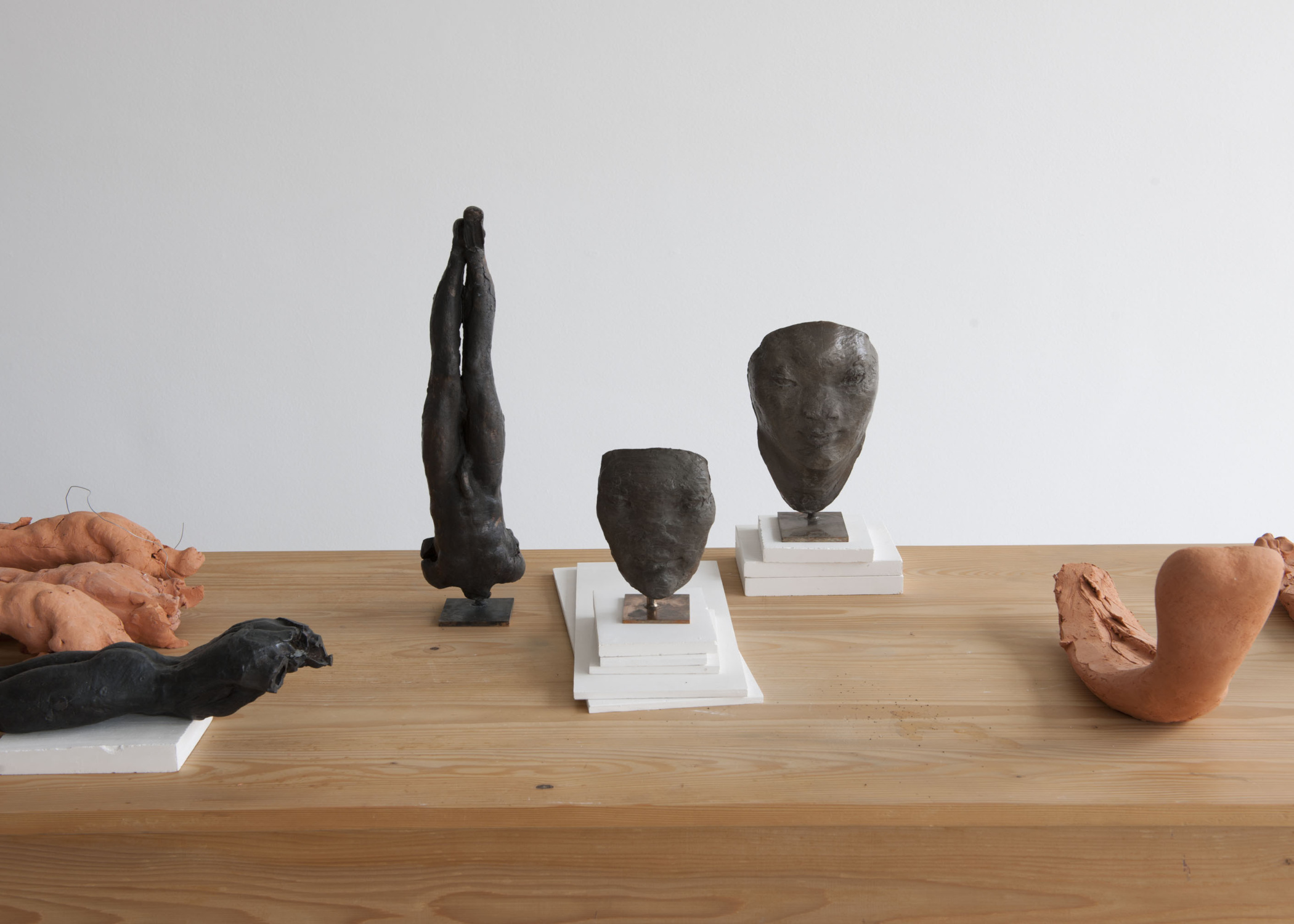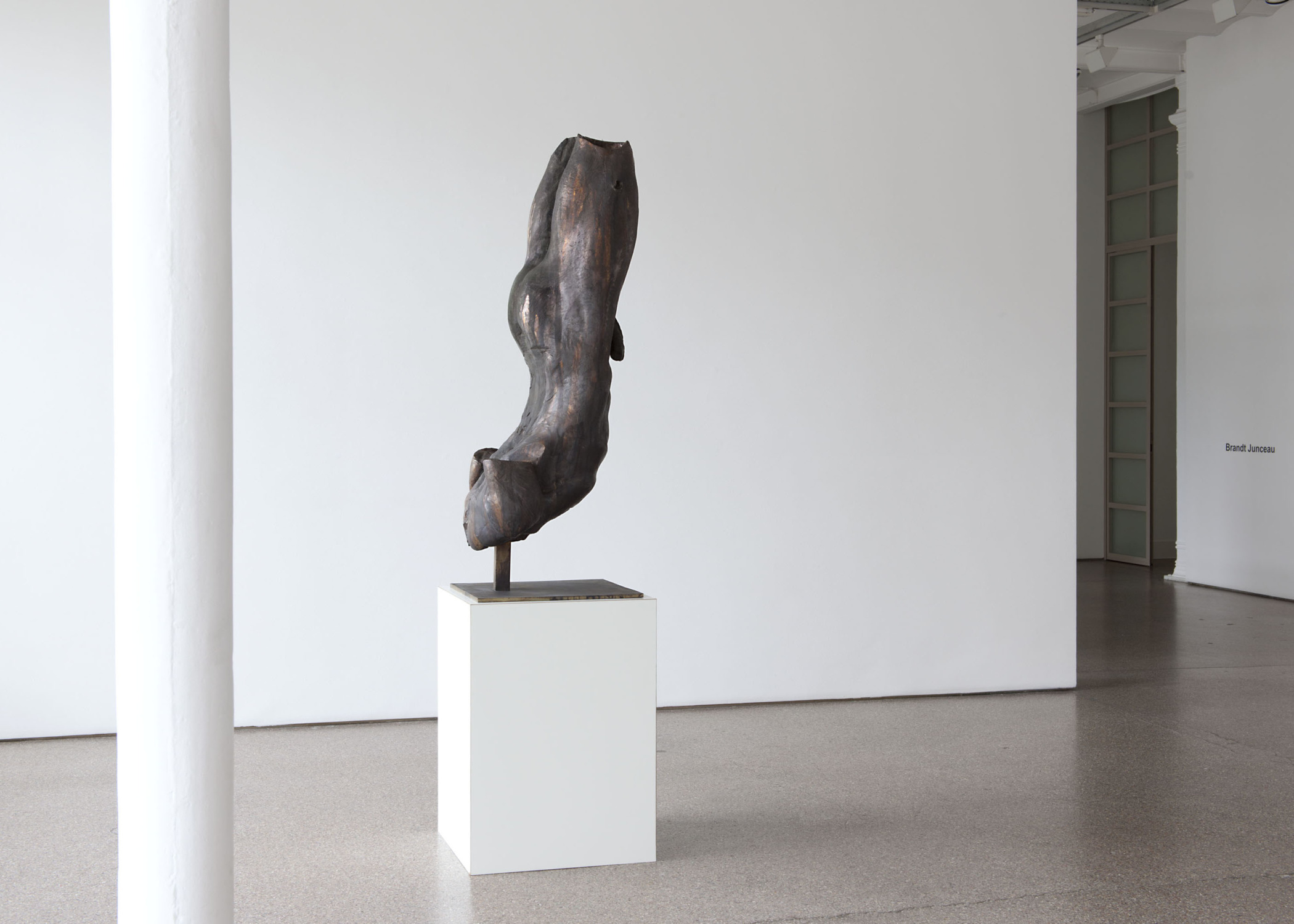Galerie Greta Meert presents the third solo exhibition of the American sculptor and essayist Brandt Junceau (1959, New York).
The exhibition places Junceau’s recent works in the context of his terracotta studies and ongoing pieces from which they have developed. His practice, which involves moldmaking and casting through successive stages, produces a series of repetitive “essays” on a given form. Each attempt is unique, none are definitive or conclusive, and all remain open to further exploration.
Seen together, the studies resemble a collection of archaeological finds. The presentation of smaller works on a long table in the gallery, including figures, masks, “sirens,” and “birds” in terracotta and bronze, evokes the atmosphere of the artist’s studio. Junceau’s sculpture maintains a constant dialogue with the past, unfolding as a kind of “imaginary archaeology.” Over the past year, during a DAAD Residency in Berlin, he studied figurative sculpture from both the last century and the ancient world. He describes himself as having “a funny sense of time,” saying that for him, “this morning and the distant past are not that far apart.” The past does not serve as reference in his work; it erupts within it.
The bronze Stehende, nearly flat like a freestanding drawing or a dark mirror, suggests an afterimage of the past. It was recently shown in Berlin, installed opposite Georg Kolbe’s Sommelier Torso (1912). The two works, separated by 99 years, stood in reflective correspondence.
The large white plaster figure (Hangende) and the bronze Torso evolved from terracotta studies produced vertically, suspended head-down like freshly killed game. Junceau’s recent work with the human figure derives from the life-size birds he exhibited at the gallery in 1995. The artist has subjected the over-life-size male body to the same overwhelming force once applied to small birds. The large figure unmistakably evokes the physical terror and sexual extremity of the Apollo and Marsyas legend, and the raw pathos of Rembrandt’s Slaughtered Ox. Junceau describes these works as “an extreme expression of a general human condition. I think we are all hunted down, overwhelmed, and destroyed against our will, and before our time.”
The ardent, aroused vitality of the hanging figure, an apparent victim, is uncanny, but this sense of the unheimlich defines much of Junceau’s work. His heads, busts, and masks confront viewers with a raw and unfamiliar consciousness, neither purely human nor entirely irrational. Similarly, his “sirens” evoke the theme of Lampedusa’s short story Lighea, which Junceau regards as the finest modern meditation on the ancient world and a kind of key to his own artistic concerns.

